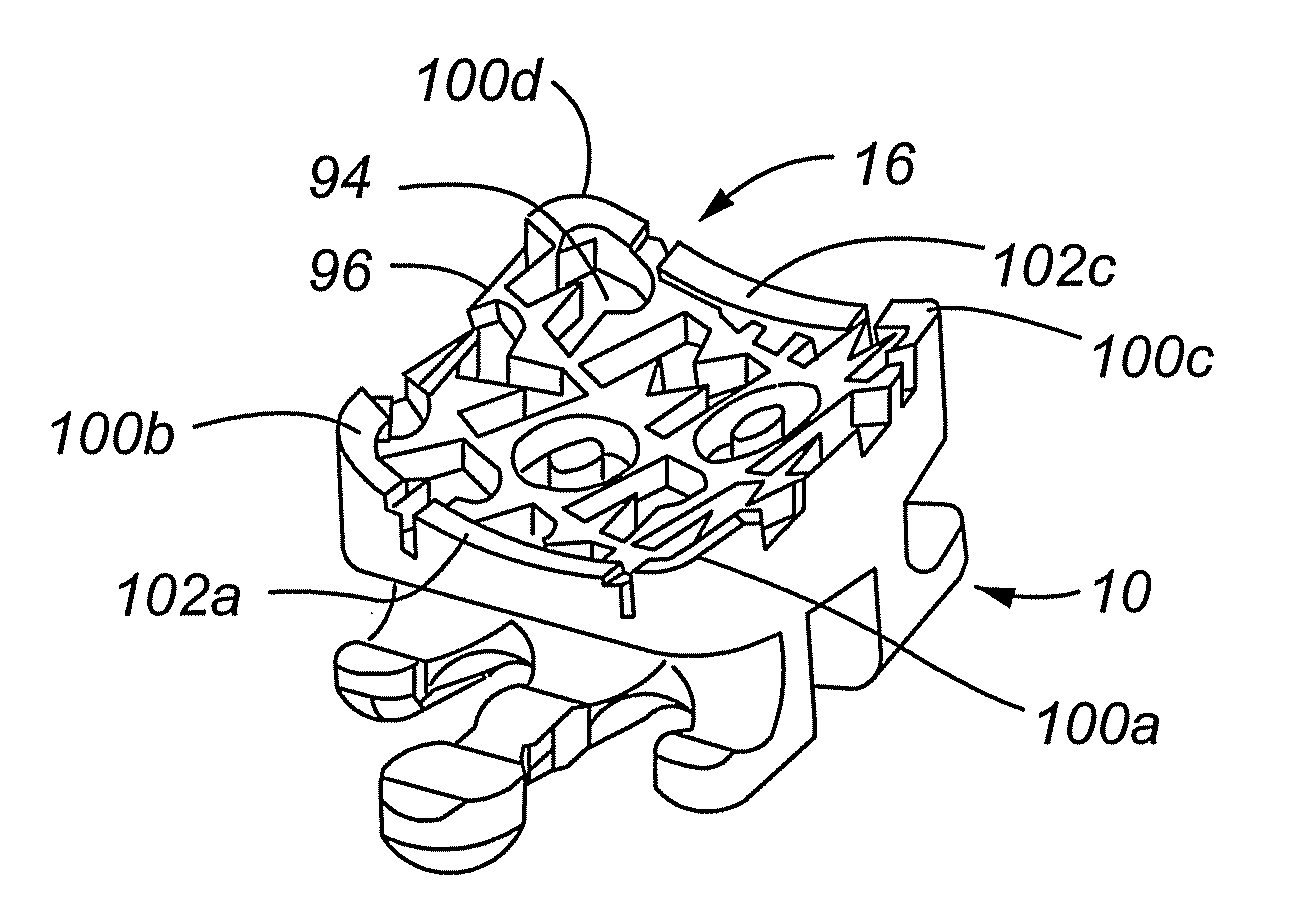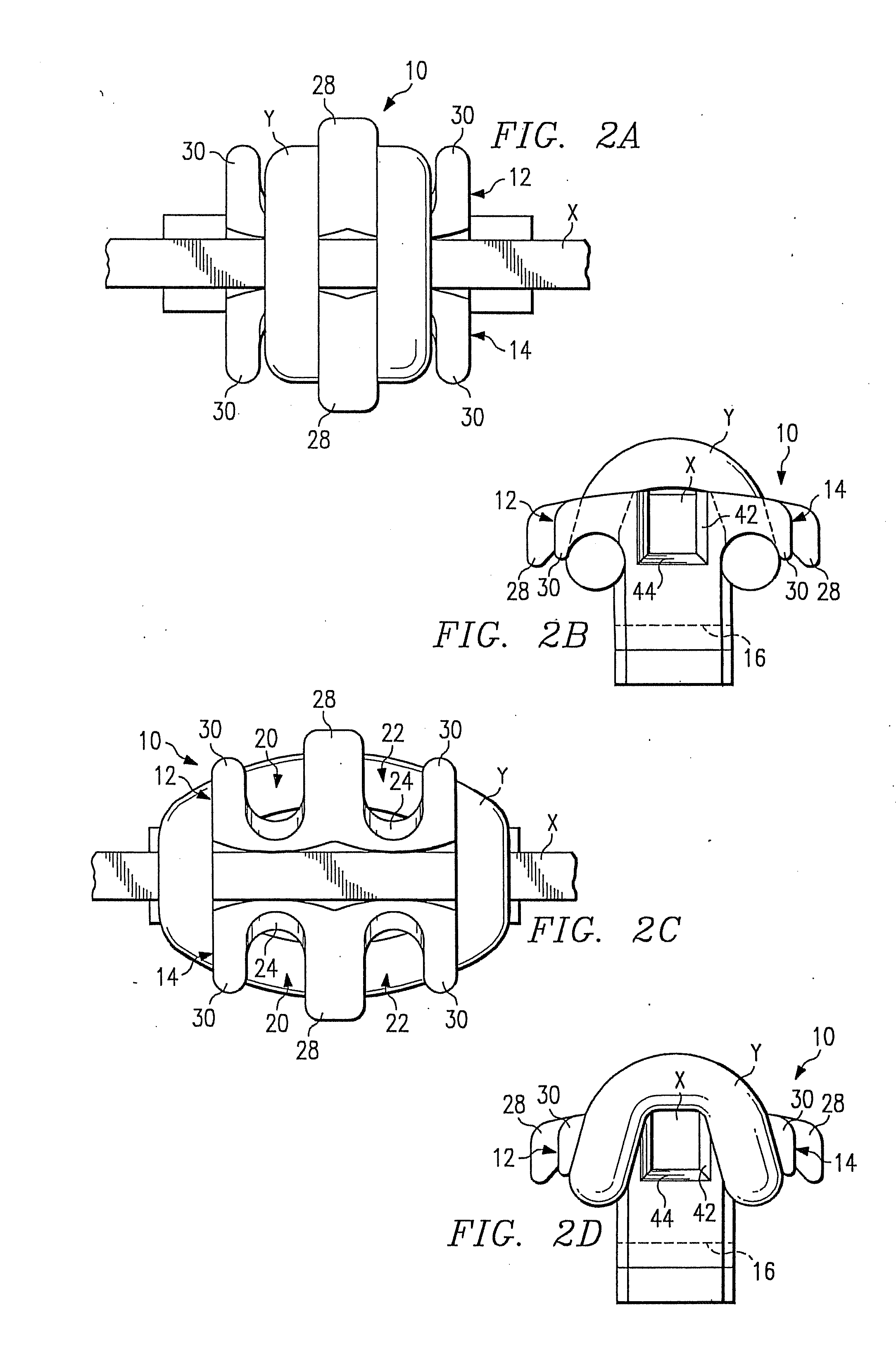Orthodontic appliance with encoded information formed in the base
a technology of encoded information and orthodontic appliances, applied in the field of orthodontic appliances, can solve problems such as the discovery of a base structure, and achieve the effect of increasing the total surface area of the appliance bas
- Summary
- Abstract
- Description
- Claims
- Application Information
AI Technical Summary
Benefits of technology
Problems solved by technology
Method used
Image
Examples
Embodiment Construction
[0057] One embodiment of the body 8 of an edgewise bracket 10 of the present disclosure is illustrated in FIGS. 1A-C and 2A-D, with various modifications, modalities and an exemplary auxiliary reflected by FIGS. 3A-C, 4A-E, 5A-C, 6A-C and 7A-B, and with various base structures and as illustrated in FIGS. 8-18 and 20-59. Corresponding features are referenced by common reference numerals.
[0058] The edgewise bracket 10 comprises two integral, opposing T-shaped tie wings 12 and 14 having a common base portion and base surface 16, and defining an archwire slot 18 therebetween. By way of example only, a flange 32 may be adjoined to the bracket 10 for subsequent attachment to a band. Alternatively, the bracket may be adjoined to a bonding pad (not shown).
[0059] Two sets of opposing ligating support means 20 and 22, are provided, each set comprising a gingivally disposed notch and occlusally disposed notch on the gingival and occlusal edges of tie wings 12, 14, respectively. Each ligating...
PUM
 Login to View More
Login to View More Abstract
Description
Claims
Application Information
 Login to View More
Login to View More - R&D
- Intellectual Property
- Life Sciences
- Materials
- Tech Scout
- Unparalleled Data Quality
- Higher Quality Content
- 60% Fewer Hallucinations
Browse by: Latest US Patents, China's latest patents, Technical Efficacy Thesaurus, Application Domain, Technology Topic, Popular Technical Reports.
© 2025 PatSnap. All rights reserved.Legal|Privacy policy|Modern Slavery Act Transparency Statement|Sitemap|About US| Contact US: help@patsnap.com



